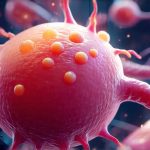The seemingly simple act of deciding what to eat is rarely straightforward. It’s a complex interplay of physiological signals, psychological factors, learned behaviors, and increasingly, the intricate world within our gut. We often attribute cravings and appetite fluctuations to willpower alone, but this overlooks the powerful biological forces at play. Understanding how our diet impacts the gut microbiome – the trillions of bacteria, fungi, viruses and other microorganisms that live in our digestive tracts – is unlocking new perspectives on why we crave what we do and how we can better manage our eating habits. It’s not merely about resisting temptation; it’s about fostering a gut environment that supports balanced desires and reduces impulsive urges for less-nutritious foods.
The connection between food, our internal microbial ecosystems, and our brains is bidirectional. What we eat directly shapes the composition of our microbiome, and in turn, the microbiome influences everything from nutrient absorption to hormone production and even neurotransmitter synthesis – all of which impact appetite regulation and craving intensity. This intricate relationship challenges traditional views of dietary control, suggesting that a more holistic approach, focused on nourishing both ourselves and our microbial communities, is crucial for achieving long-term health and well-being. Focusing solely on restriction often fails because it doesn’t address the underlying biological drivers of cravings; instead, we need to understand how to modulate these drivers through dietary choices and microbiome support. This can be further understood by looking at how digestive tests help explain low appetite and early satiety.
Dietary Patterns & Microbiome Shifts
The Western diet, characterized by high intakes of processed foods, refined sugars, saturated fats, and low fiber content, has been linked to a decrease in microbial diversity – considered a hallmark of gut health. This reduction in diversity can have profound consequences for appetite regulation. A less diverse microbiome often means fewer beneficial bacteria capable of producing short-chain fatty acids (SCFAs) like butyrate, propionate, and acetate. These SCFAs aren’t just waste products of bacterial fermentation; they are key signaling molecules that communicate with the gut-brain axis, impacting satiety, glucose metabolism, and even mood regulation. A diet lacking in fiber – the primary food source for these beneficial bacteria – starves them, leading to a decline in SCFA production and potentially increasing cravings for readily available energy sources like sugar and refined carbohydrates. Understanding how fluctuating hormones influence appetite, digestion, and nausea sensitivity can also help navigate these changes.
Conversely, diets rich in plant-based foods, whole grains, legumes, and fermented foods promote microbial diversity and abundance of health-promoting bacteria. These dietary patterns support the growth of microbes that not only produce more SCFAs but also influence the production of hormones like glucagon-like peptide-1 (GLP-1) and peptide YY (PYY) – both crucial for signaling fullness to the brain. Furthermore, a healthy microbiome contributes to improved gut barrier integrity, reducing “leaky gut” syndrome which can trigger systemic inflammation that disrupts appetite control mechanisms. It’s important to note this isn’t about eliminating all “unhealthy” foods; it’s about creating an overall dietary pattern that prioritizes nourishment and supports a thriving microbial ecosystem. Considering food temperature and meal pacing can also contribute to digestive health.
- A diet high in processed foods often leads to decreased diversity and increased abundance of bacteria associated with inflammation and cravings.
- Plant-based diets promote diversity, SCFA production, and hormone regulation contributing to better appetite control.
- Fermented foods introduce beneficial microbes directly into the gut, further enhancing microbiome health.
Ultimately, dietary patterns are not merely about calories or macronutrients; they’re about cultivating a specific microbial environment that profoundly influences our relationship with food. Looking at how meal texture and temperature influence nausea, fullness, and gut response can give additional insight into these patterns.
The Gut-Brain Axis & Craving Modulation
The gut-brain axis represents the bidirectional communication network between the digestive tract and the brain. This connection isn’t just neurological – it involves hormonal, immune, and metabolic pathways. The microbiome plays a central role in this axis, influencing brain function through several mechanisms. For instance, certain gut bacteria can directly synthesize neurotransmitters like serotonin (the “happiness hormone”) and dopamine (involved in reward and motivation), which impact mood and cravings. An imbalance in the gut microbiome – often referred to as dysbiosis – can disrupt neurotransmitter production, potentially leading to emotional eating or cravings for foods that provide a temporary dopamine rush, such as sugary treats.
Furthermore, microbial metabolites like SCFAs can cross the blood-brain barrier and directly influence neuronal activity. Butyrate, in particular, has been shown to have neuroprotective effects and improve brain function. Beyond neurotransmitters and metabolites, the microbiome also modulates the hypothalamus, a region of the brain responsible for regulating appetite and energy balance. Microbial signals can alter hypothalamic sensitivity to hormones like leptin (which suppresses appetite) and ghrelin (which stimulates it), ultimately impacting how hungry we feel. This means that even if our bodies have sufficient energy stores, a dysbiotic microbiome could still signal the brain to crave more food. For some, a gluten-free diet might be beneficial in managing these sensitivities.
- The gut-brain axis is a two-way communication network influencing mood, cravings, and appetite regulation.
- Microbiome imbalances can disrupt neurotransmitter production, contributing to emotional eating.
- SCFAs impact neuronal activity and hypothalamic function, directly affecting hunger signals.
Fiber’s Role in Appetite Suppression
Fiber isn’t just “roughage”; it’s a fundamental component of a healthy diet that profoundly impacts both microbiome composition and appetite regulation. Insoluble fiber adds bulk to the stool promoting regularity, while soluble fiber is fermented by gut bacteria into SCFAs. This fermentation process slows down gastric emptying – the rate at which food leaves the stomach – leading to increased feelings of fullness. The physical bulk from fiber combined with the signaling effects of SCFAs creates a powerful appetite-suppressing effect.
Beyond its direct impact on satiety, fiber also alters the gut microbiome in ways that reduce cravings. By feeding beneficial bacteria, it promotes diversity and increases SCFA production, as previously discussed. This can help to modulate hormone levels and improve gut barrier integrity, further contributing to balanced appetite control. Different types of fiber support different microbial populations; therefore, consuming a variety of fiber-rich foods is crucial for maximizing its benefits.
- Fiber slows gastric emptying and promotes feelings of fullness through physical bulk and SCFA production.
- It feeds beneficial bacteria, enhancing diversity and reducing cravings.
- Diverse fiber intake supports a wider range of microbial populations leading to optimal gut health.
The Influence of Fermented Foods
Fermented foods like yogurt, kefir, sauerkraut, kimchi, and kombucha are naturally rich in probiotics – live microorganisms that can colonize the gut and contribute to microbiome diversity. While probiotic supplementation has shown mixed results, incorporating fermented foods into the diet offers a more natural and sustainable way to introduce beneficial microbes. These foods not only deliver probiotics but also contain prebiotics – non-digestible fibers that serve as food for these microbes, further enhancing their growth and activity.
The benefits of fermented foods extend beyond microbiome modulation. The fermentation process itself creates unique bioactive compounds with potential health benefits. For example, kefir contains kefiran, a polysaccharide with immune-boosting properties. Importantly, the microbial composition of fermented foods varies widely depending on the production method and ingredients used. Therefore, incorporating a variety of fermented foods into your diet can maximize its impact on gut health and potentially reduce cravings by influencing appetite regulation pathways.
- Fermented foods provide probiotics and prebiotics enhancing microbiome diversity.
- They contain unique bioactive compounds with potential health benefits.
- Varied consumption maximizes the positive impacts on gut health and appetite control.
Sugar & The Microbiome-Craving Cycle
Refined sugar and highly processed carbohydrates can disrupt the delicate balance of the gut microbiome, creating a vicious cycle of cravings. When we consume large amounts of sugar, it feeds certain types of bacteria – often those associated with inflammation and dysbiosis – while suppressing the growth of beneficial species. This shift in microbial composition can lead to increased intestinal permeability (“leaky gut”), allowing inflammatory molecules to enter the bloodstream and impacting brain function.
Furthermore, sugar directly stimulates reward pathways in the brain, creating a dopamine rush that reinforces cravings. The microbiome exacerbates this effect by producing metabolites that enhance sugar absorption and signaling. This creates a feedback loop where sugar consumption drives microbial imbalances, which then intensify cravings for more sugar. Breaking this cycle requires reducing sugar intake and focusing on dietary patterns that support a healthy microbiome – emphasizing fiber-rich foods, fermented products, and minimizing processed foods.
- Sugar feeds unfavorable bacteria leading to dysbiosis and inflammation.
- It stimulates reward pathways in the brain reinforcing cravings.
- A healthy microbiome can help break this cycle by modulating appetite regulation pathways.
It’s important to remember that everyone’s microbiome is unique and responds differently to dietary interventions. There isn’t a one-size-fits-all solution, but understanding these core principles – the power of fiber, the benefits of fermented foods, and the detrimental effects of excessive sugar – can empower us to make informed choices that support both our physical health and our mental well-being. Understanding how menstrual cycles influence acid production and digestive pain may also be relevant for some individuals.


















